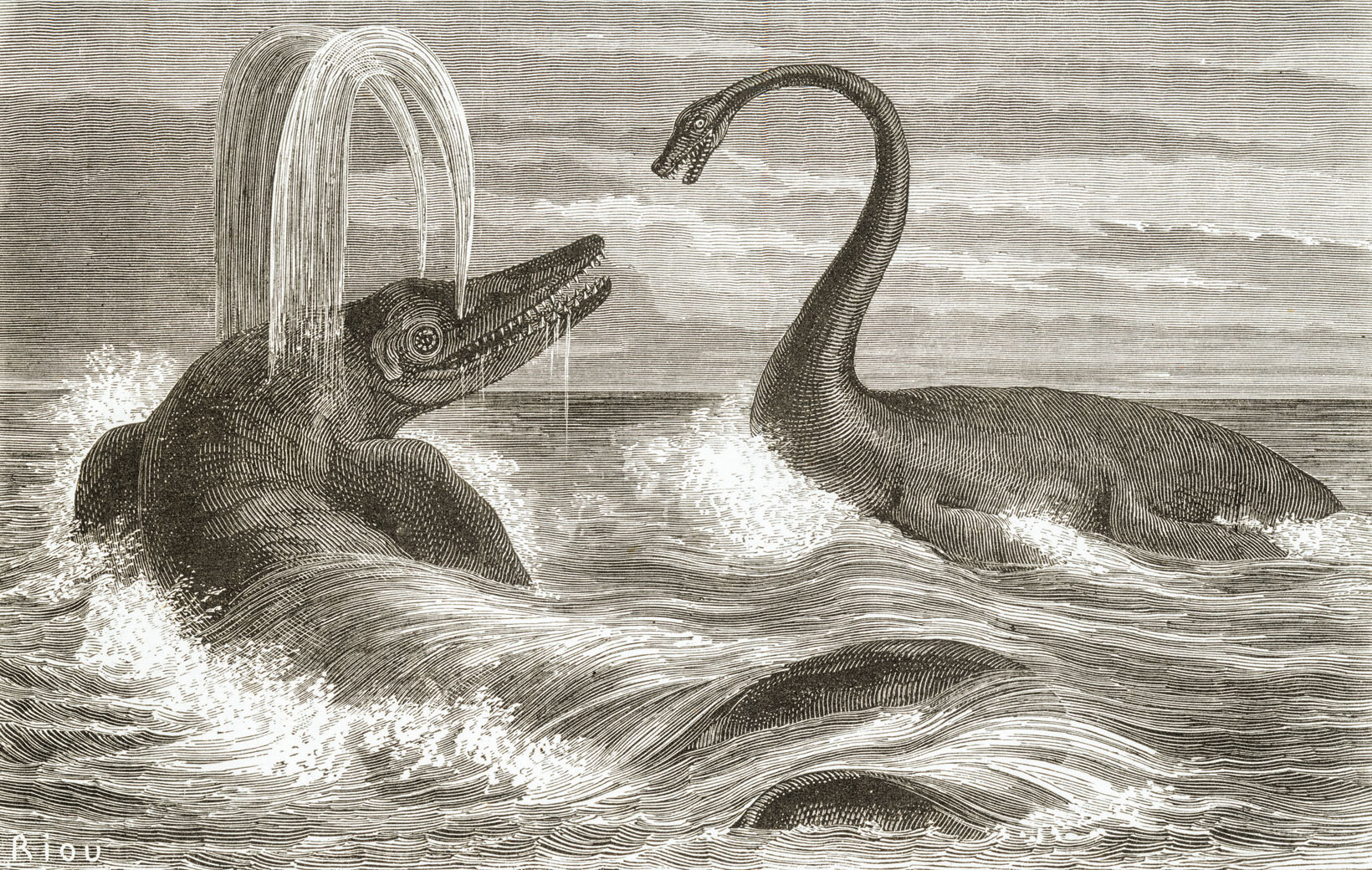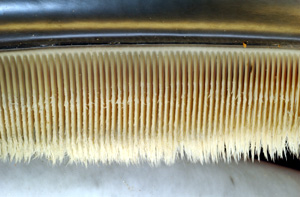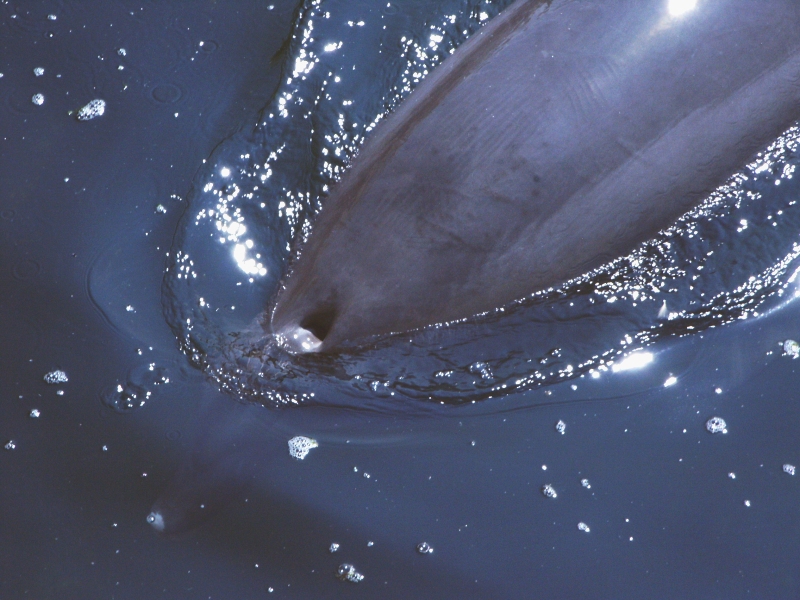|
Secondarily Aquatic Tetrapods
Several groups of tetrapods have undergone secondary aquatic adaptation, an evolutionary transition from being purely terrestrial to living at least part of the time in water. These animals are called "secondarily aquatic" because although their ancestors lived on land for hundreds of millions of years, they all originally descended from aquatic animals (see Evolution of tetrapods). These ancestral tetrapods had never left the water, and were thus primarily aquatic, like modern fishes. Secondary aquatic adaptations tend to develop in early speciation as the animal ventures into water in order to find available food. As successive generations spend more time in the water, natural selection causes the acquisition of more adaptations. Animals of later generations may spend the majority of their life in the water, coming ashore for mating. Finally, fully adapted animals may take to mating and birthing in water or ice. Anapsid ''Archelon'' is a type of giant sea turtle dating from the ... [...More Info...] [...Related Items...] OR: [Wikipedia] [Google] [Baidu] |
Tetrapods
Tetrapods (; ) are four-limb (anatomy), limbed vertebrate animals constituting the superclass Tetrapoda (). It includes extant taxon, extant and extinct amphibians, sauropsids (reptiles, including dinosaurs and therefore birds) and synapsids (pelycosaurs, extinct therapsids and all extant mammals). Tetrapods evolved from a clade of primitive semiaquatic animals known as the Tetrapodomorpha which, in turn, evolved from ancient lobe-finned fish (sarcopterygians) around 390 million years ago in the Middle Devonian, Middle Devonian period; their forms were transitional between lobe-finned fishes and true four-limbed tetrapods. Limbed vertebrates (tetrapods in the broad sense of the word) are first known from Middle Devonian trackways, and body fossils became common near the end of the Late Devonian but these were all aquatic. The first crown group, crown-tetrapods (last common ancestors of extant tetrapods capable of terrestrial locomotion) appeared by the very early Mississippian ( ... [...More Info...] [...Related Items...] OR: [Wikipedia] [Google] [Baidu] |
Ichthyosaur
Ichthyosaurs (Ancient Greek for "fish lizard" – and ) are large extinct marine reptiles. Ichthyosaurs belong to the order known as Ichthyosauria or Ichthyopterygia ('fish flippers' – a designation introduced by Sir Richard Owen in 1842, although the term is now used more for the parent clade of the Ichthyosauria). Ichthyosaurs thrived during much of the Mesozoic era; based on fossil evidence, they first appeared around 250 million years ago ( Ma) and at least one species survived until about 90 million years ago, into the Late Cretaceous. During the Early Triassic epoch, ichthyosaurs and other ichthyosauromorphs evolved from a group of unidentified land reptiles that returned to the sea, in a development similar to how the mammalian land-dwelling ancestors of modern-day dolphins and whales returned to the sea millions of years later, which they gradually came to resemble in a case of convergent evolution. Ichthyosaurs were particularly abundant in the Late Triassic ... [...More Info...] [...Related Items...] OR: [Wikipedia] [Google] [Baidu] |
Bipedalism
Bipedalism is a form of terrestrial locomotion where an organism moves by means of its two rear limbs or legs. An animal or machine that usually moves in a bipedal manner is known as a biped , meaning 'two feet' (from Latin ''bis'' 'double' and ''pes'' 'foot'). Types of bipedal movement include walking, running, and hopping. Several groups of modern species are habitual bipeds whose normal method of locomotion is two-legged. In the Triassic period some groups of archosaurs (a group that includes crocodiles and dinosaurs) developed bipedalism; among the dinosaurs, all the early forms and many later groups were habitual or exclusive bipeds; the birds are members of a clade of exclusively bipedal dinosaurs, the theropods. Within mammals, habitual bipedalism has evolved multiple times, with the macropods, kangaroo rats and mice, springhare, hopping mice, pangolins and hominin apes ( australopithecines, including humans) as well as various other extinct groups evolving th ... [...More Info...] [...Related Items...] OR: [Wikipedia] [Google] [Baidu] |
Human Evolution
Human evolution is the evolutionary process within the history of primates that led to the emergence of ''Homo sapiens'' as a distinct species of the hominid family, which includes the great apes. This process involved the gradual development of traits such as human bipedalism and language, as well as interbreeding with other hominins, which indicate that human evolution was not linear but a web.Human Hybrids (PDF). Michael F. Hammer. ''Scientific American'', May 2013. The study of human evolution involves several scientific disciplines, including physical anthropology ... [...More Info...] [...Related Items...] OR: [Wikipedia] [Google] [Baidu] |
Odobenid
Odobenidae is a family of pinnipeds. The only living species is the walrus (''Odobenus rosmarus''). In the past, however, the group was much more diverse, and includes more than a dozen fossil genera. Taxonomy All genera, except ''Odobenus'', are extinct. *†''Archaeodobenus'' *†''Prototaria'' *†''Proneotherium'' *†''Nanodobenus'' *†''Neotherium'' *†''Imagotaria'' *†''Kamtschatarctos'' *†''Pelagiarctos'' *†''Pontolis'' *†'' Pseudotaria'' *†''Titanotaria'' *Clade Neodobenia **†''Gomphotaria'' **Subfamily Dusignathinae ***†'' Dusignathus'' **Subfamily Odobeninae ***†''Aivukus'' ***†''Ontocetus'' ***†''Pliopedia'' ***†'' Protodobenus'' ***†'' Valenictus'' ***''Odobenus The walrus (''Odobenus rosmarus'') is a large flippered marine mammal with a discontinuous distribution about the North Pole in the Arctic Ocean and subarctic seas of the Northern Hemisphere. The walrus is the only living species in the fa ...'' In re-analyzing ''Pelagiar ... [...More Info...] [...Related Items...] OR: [Wikipedia] [Google] [Baidu] |
Phocid
The earless seals, phocids or true seals are one of the three main groups of mammals within the seal lineage, Pinnipedia. All true seals are members of the family Phocidae (). They are sometimes called crawling seals to distinguish them from the fur seals and sea lions of the family Otariidae. Seals live in the oceans of both hemispheres and, with the exception of the more tropical monk seals, are mostly confined to polar, subpolar, and temperate climates. The Baikal seal is the only species of exclusively freshwater seal. Taxonomy and evolution Evolution The earliest known fossil earless seal is '' Noriphoca gaudini'' from the late Oligocene or earliest Miocene ( Aquitanian) of Italy. Other early fossil phocids date from the mid-Miocene, 15 million years ago in the north Atlantic. Until recently, many researchers believed that phocids evolved separately from otariids and odobenids; and that they evolved from otter-like animals, such as '' Potamotherium'', which in ... [...More Info...] [...Related Items...] OR: [Wikipedia] [Google] [Baidu] |
Manatee
Manatees (family Trichechidae, genus ''Trichechus'') are large, fully aquatic, mostly herbivorous marine mammals sometimes known as sea cows. There are three accepted living species of Trichechidae, representing three of the four living species in the order Sirenia: the Amazonian manatee (''Trichechus inunguis''), the West Indian manatee (''Trichechus manatus''), and the West African manatee (''Trichechus senegalensis''). They measure up to long, weigh as much as , and have paddle-like tails. Manatees are herbivores and eat over 60 different freshwater and saltwater plants. Manatees inhabit the shallow, marshy coastal areas and rivers of the Caribbean Sea, the Gulf of Mexico, the Amazon basin, and West Africa. The main causes of death for manatees are human-related issues, such as habitat destruction and human objects. Their slow-moving, curious nature has led to violent collisions with propeller-driven boats and ships. Some manatees have been found with over 50 scars ... [...More Info...] [...Related Items...] OR: [Wikipedia] [Google] [Baidu] |
Dugong
The dugong (; ''Dugong dugon'') is a marine mammal. It is one of four living species of the order Sirenia, which also includes three species of manatees. It is the only living representative of the once-diverse family Dugongidae; its closest modern relative, Steller's sea cow (''Hydrodamalis gigas''), was hunted to extinction in the 18th century. The dugong is the only sirenian in its range, which spans the waters of some 40 countries and territories throughout the Indo-West Pacific. The dugong is largely dependent on seagrass communities for subsistence and is thus restricted to the coastal habitats which support seagrass meadows, with the largest dugong concentrations typically occurring in wide, shallow, protected areas such as bays, mangrove channels, the waters of large inshore islands and inter-reefal waters. The northern waters of Australia between Shark Bay and Moreton Bay are believed to be the dugong's contemporary stronghold. Like all modern sirenians, th ... [...More Info...] [...Related Items...] OR: [Wikipedia] [Google] [Baidu] |
Hippopotamus
The hippopotamus ( ; : hippopotamuses or hippopotami; ''Hippopotamus amphibius''), also called the hippo, common hippopotamus, or river hippopotamus, is a large semiaquatic mammal native to sub-Saharan Africa. It is one of only two extant species in the family Hippopotamidae, the other being the pygmy hippopotamus (''Choeropsis liberiensis'' or ''Hexaprotodon liberiensis''). Its name comes from the ancient Greek for "river horse" (). Aside from elephants and rhinos, the hippopotamus is the largest land mammal. It is also the largest extant land artiodactyl. Despite their physical resemblance to pigs and other terrestrial even-toed ungulates, the closest living relatives of the hippopotamids are cetaceans ( whales, dolphins, porpoises, etc.), from which they diverged about 55 million years ago. Hippos are recognisable for their barrel-shaped torsos, wide-opening mouths with large canine tusks, nearly hairless bodies, pillar-like legs, and large size: adults averag ... [...More Info...] [...Related Items...] OR: [Wikipedia] [Google] [Baidu] |
Animal Echolocation
Echolocation, also called bio sonar, is a biological sonar used by several animal species. Echolocating animals emit calls out to the environment and listen to the echoes of those calls that return from various objects near them. They use these echoes to locate and identify the objects. Echolocation is used for navigation, foraging, and hunting in various environments. Echolocating animals include some mammals (most notably Laurasiatheria) and a few birds, especially some bat species and odontocetes (toothed whales and dolphins), but also in simpler forms in other groups such as shrews, and two cave-dwelling bird groups, the so-called cave swiftlets in the genus '' Aerodramus'' (formerly ''Collocalia'') and the unrelated oilbird ''Steatornis caripensis''. Early research The term ''echolocation'' was coined in 1938 by the American zoologist Donald Griffin, who, with Robert Galambos, first demonstrated the phenomenon in bats. As Griffin described in his book, the 18t ... [...More Info...] [...Related Items...] OR: [Wikipedia] [Google] [Baidu] |
Baleen
Baleen is a filter-feeding system inside the mouths of baleen whales. To use baleen, the whale first opens its mouth underwater to take in water. The whale then pushes the water out, and animals such as krill are filtered by the baleen and remain as a food source for the whale. Baleen is similar to bristles and consists of keratin, the same substance found in human fingernails, skin and hair. Baleen is a skin derivative. Some whales, such as the bowhead whale, have longer baleen than others. Other whales, such as the gray whale, only use one side of their baleen. These baleen bristles are arranged in plates across the upper jaw of whales. Depending on the species, a baleen plate can be long, and weigh up to . Its hairy fringes are called baleen hair or whalebone hair. They are also called baleen bristles, which in sei whales are highly calcified, with calcification functioning to increase their stiffness. Baleen plates are broader at the gumline (base). The plates have b ... [...More Info...] [...Related Items...] OR: [Wikipedia] [Google] [Baidu] |
Blowhole (anatomy)
In cetology, the study of whales and other cetaceans, a blowhole is the hole (or spiracle) at the top of the head through which the animal breathes air. In baleen whales, these are in pairs. It is homologous with the nostril of other mammals, and evolved via gradual movement of the nostrils to the top of the head. The posterior placement of blowholes on cetacean heads is believed to minimize the energy used when breathing at the water's surface. As whales reach the water surface to breathe, they forcefully expel air through the blowhole. The exhalation is released into the comparably lower-pressure, colder atmosphere, and any water vapor condenses. This spray, known as the ''blow'', is often visible from far away as a white splash, which can also be caused by water resting on top of the blowhole. Purpose and mechanism Air sacs just below the blowhole allow whales to produce sounds for communication and, for toothed whales, echolocation. These air sacs are filled with air, wh ... [...More Info...] [...Related Items...] OR: [Wikipedia] [Google] [Baidu] |







